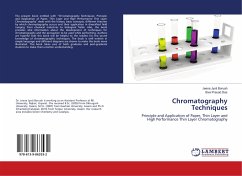High Quality Content by WIKIPEDIA articles! High Quality Content by WIKIPEDIA articles! High Quality Content by WIKIPEDIA articles! In chemistry, Le Chatelier's Principle, also called the Le Chatelier-Braun principle, can be used to predict the effect of a change in conditions on a chemical equilibrium. The principle is named after Henry Louis Le Chatelier and Karl Ferdinand Braun who discovered it independently. It can be summarized as: If a chemical system at equilibrium experiences a change in concentration, temperature, volume, or partial pressure, then the equilibrium shifts to counteract the imposed change. This principle has a variety of names, depending upon the discipline using it. See for example Lenz's law and homeostasis. It is common to take Le Chatelier's principle to be a more general observation, roughly stated: Any change in status quo prompts an opposing reaction in the responding system. In chemistry, the principle is used to manipulate the outcomes of reversible reactions, often to increase the yield of reactions. In pharmacology, the binding of ligands to the receptor may shift the equilibrium according to Le Chatelier's principle thereby explaining the diverse phenomena of receptor activation and desensitization.








